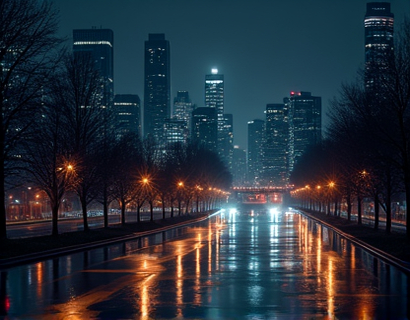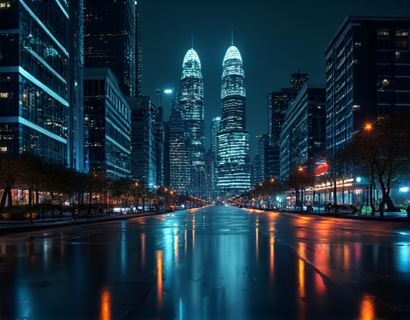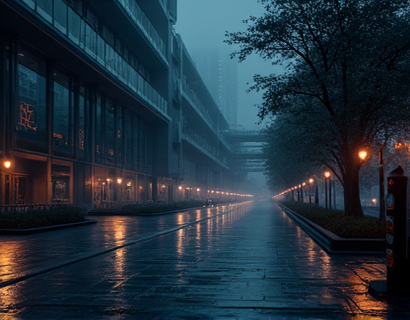Embarking on an Immersive Journey: A Comprehensive Guide to the Ancient Indus Valley
The Indus Valley, a cradle of one of the world's oldest civilizations, beckons travelers and cultural enthusiasts with its rich tapestry of history, architecture, and cultural heritage. This exhaustive guide serves as a premier resource for those eager to delve into the mysteries of this ancient region, offering in-depth insights into historical landmarks, travel tips, and hidden gems. Whether you are a seasoned explorer or a curious traveler, this guide ensures a profound and memorable exploration of the Indus Valley's timeless allure.
Historical Background and Significance
The Indus Valley Civilization, dating back to around 3300 BCE, is one of the world's earliest urban civilizations, alongside those of Mesopotamia and Egypt. Spanning across present-day Pakistan and northwestern India, this civilization thrived for over a millennium, leaving behind a legacy of sophisticated urban planning, advanced water management systems, and intricate craftsmanship. The cities of Harappa and Mohenjo-Daro, now archaeological sites, stand as testaments to the ingenuity and organizational skills of the Indus people.
The civilization's decline around 1300 BCE remains a subject of scholarly debate, with theories ranging from climate change to invasions. Despite the passage of millennia, the Indus Valley's influence persists in the region's culture, language, and traditions. Today, the sites of this ancient civilization attract scholars, tourists, and history buffs from around the globe, each seeking to uncover the secrets of a bygone era.
Key Historical Landmarks
Visiting the Indus Valley offers a unique opportunity to walk in the footsteps of a civilization that shaped early human history. Here are some of the most significant historical landmarks to include in your itinerary:
- Mohenjo-Daro: One of the largest and best-preserved cities of the Indus Valley Civilization, Mohenjo-Daro provides a vivid glimpse into urban life over 4,000 years ago. The Great Bath, a sophisticated water management system, and the intricate drainage system are highlights of this UNESCO World Heritage Site.
- Harappa: Another major city of the Indus Valley, Harappa offers extensive ruins including the Citadel, Lower Town, and a museum housing artifacts from the site. The site's well-preserved structures and artifacts offer a comprehensive view of Indus Valley life.
- Kalibangan: Known for its early evidence of wheel-made pottery and a well-planned city layout, Kalibangan is a lesser-visited site that offers a more serene experience. The site includes a fire altars and a sophisticated drainage system.
- Rakhigarhi: Often referred to as the largest Harappan site, Rakhigarhi is still under excavation but promises to reveal more about the civilization's extent and complexity. The site is particularly notable for its large size and the potential for uncovering new insights into Indus Valley society.
- Ain Ghazipur: This site, located in present-day Afghanistan, is less known but significant for its well-preserved urban planning and evidence of trade connections with other regions.
Cultural Heritage and Traditions
Beyond the archaeological sites, the Indus Valley region is rich in cultural heritage and living traditions. The area is home to diverse communities, each contributing to the region's vibrant cultural tapestry. Visitors can experience this richness through:
-Local Festivals: Participating in local festivals such as the Urs of Data Ganj Baksh in Lahore or the Basant festival of colors in Punjab offers a glimpse into the region's lively cultural practices.
-Traditional Crafts: Indus Valley is renowned for its handicrafts, including block printing, embroidery, and pottery. Visiting local markets and workshops allows tourists to witness these age-old techniques and purchase unique souvenirs.
-Cuisine: The regional cuisine is a delightful blend of flavors, influenced by both Indian and Central Asian culinary traditions. Dishes like biryani, kebabs, and various vegetarian options reflect the area's rich gastronomic heritage.
-Language and Literature: The region has a rich literary tradition, with classical texts like the Rigveda and the works of Sufi poets like Rumi and Bulleh Shah. Exploring local libraries and cultural centers can provide insights into this literary legacy.
Travel Tips and Essentials
Planning a trip to the Indus Valley requires some preparation to ensure a smooth and enriching experience. Here are some essential tips and insights:
-Best Time to Visit: The optimal time to visit the Indus Valley is from October to March, when the weather is pleasant and comfortable for sightseeing. Summers can be extremely hot, while winters can be cool, especially in the evenings.
-Dress Code: Dress modestly when visiting religious sites and rural areas. Lightweight, breathable clothing is recommended for warmer months, while layers are essential for cooler evenings.
-Local Customs: Respect local customs and traditions. Remove shoes when entering homes or religious sites, and ask permission before taking photographs of people.
-Transportation: Renting a car or joining a guided tour can provide flexibility and safety. Public transportation is available but may require more planning.
-Health and Safety: Stay hydrated, use sunscreen, and carry necessary medications. Consult a doctor about vaccinations and health precautions before traveling.
-Accommodation: Options range from luxury hotels to budget-friendly guesthouses. Booking in advance, especially during peak seasons, is advisable to ensure availability.
Hidden Gems and Local Attractions
While the major sites are must-visits, the Indus Valley also holds numerous hidden gems and local attractions that offer a more authentic and off-the-beaten-path experience:
-Taxila: Located near Islamabad, Taxila is a UNESCO World Heritage Site known for its ancient Buddhist and Hindu monasteries, as well as the remains of a Greek and Buddhist city. The site offers a fascinating blend of cultures and histories.
-Lahore's Walled City: Beyond the famous Lahore Fort and Badshahi Mosque, the Walled City of Lahore is a labyrinth of narrow streets, bazaars, and historic buildings. Explore the Shahi Hammam, a 17th-century hammam, and the Alamgiri Gate for a true local experience.
-Mansura Lake: A serene spot for a break from the hustle and bustle, Mansura Lake offers boating, picnic areas, and a chance to see local wildlife. It's a perfect destination for a relaxing day out.
-Local Villages: Visiting rural villages provides a glimpse into the daily lives of the region's inhabitants. Engaging with local communities through homestays or village tours can be a deeply rewarding experience.
Essential Resources for Travelers
To make the most of your journey through the Indus Valley, here are some essential resources and tools:
-Travel Guides: Books like "Lonely Planet's Pakistan" and "India: The Rough Guide" offer comprehensive information on the region's history, culture, and practical travel advice.
-Online Forums and Blogs: Websites like TripAdvisor, Lonely Planet, and travel blogs provide valuable insights from fellow travelers, including tips on lesser-known spots and local experiences.
-Cultural Institutions: Museums and cultural centers in cities like Lahore, Islamabad, and Multan offer exhibits and lectures on the Indus Valley Civilization and its legacy.
-Local Guides: Hiring a local guide can enhance your understanding of the sites and provide access to areas that may not be easily accessible to tourists.
Conclusion
The Indus Valley Civilization is a treasure trove of history, culture, and natural beauty, offering an unparalleled journey into the past. With its ancient cities, rich traditions, and welcoming people, the region promises a memorable and enlightening experience for all who visit. Whether you are tracing the steps of ancient civilizations or discovering the vibrant culture of the present, the Indus Valley awaits with open arms, ready to share its timeless stories.










































